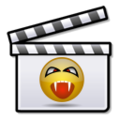
| Part of a series on Horror films |
|---|
 |
| By decade |
| By continent |
| Key topics |
 |
| Speculative fiction |
|---|
|
|
The history of horror films was described by author Siegbert Solomon Prawer as difficult to read as a linear historical path, with the genre changing throughout the decades, based on the state of cinema, audience tastes and contemporary world events.
Films prior to the 1930s, such as early German expressionist cinema and trick films, have been retrospectively described as horror films as the genre did not become a codified genre until the release of Dracula (1931). Dracula was a box office success, leading to Universal and several other American film studios to develop and popularise horror films well into the 1940s. By the 1950s, horror would often be made with science fiction themes, and towards the end of the decade horror was a more common genre of international productions.
The 1960s saw further developments, with material based on contemporary works instead of classical literature. The release of films like Psycho, Black Sunday and Night of the Living Dead led to an increase of violence and erotic scenes within the genre. The 1970s would expand on these themes with films that would delve into gorier pictures, as well as films that were near or straight pornographic hybrids. Genre cycles in this era include the natural horror film, and the rise of slasher films which would expand in the early 1980s. Towards the 1990s, postmodernism entered horror, while some of the biggest hits of the decade included films from Japan with the success of Ring (1998).
In the 21st century, streaming media popularised horror trends, whilst trends included torture porn influenced by the success of Saw, films using a "found footage" technique, and independent productions such as Get Out, Hereditary and the Insidious series which were box office hits.